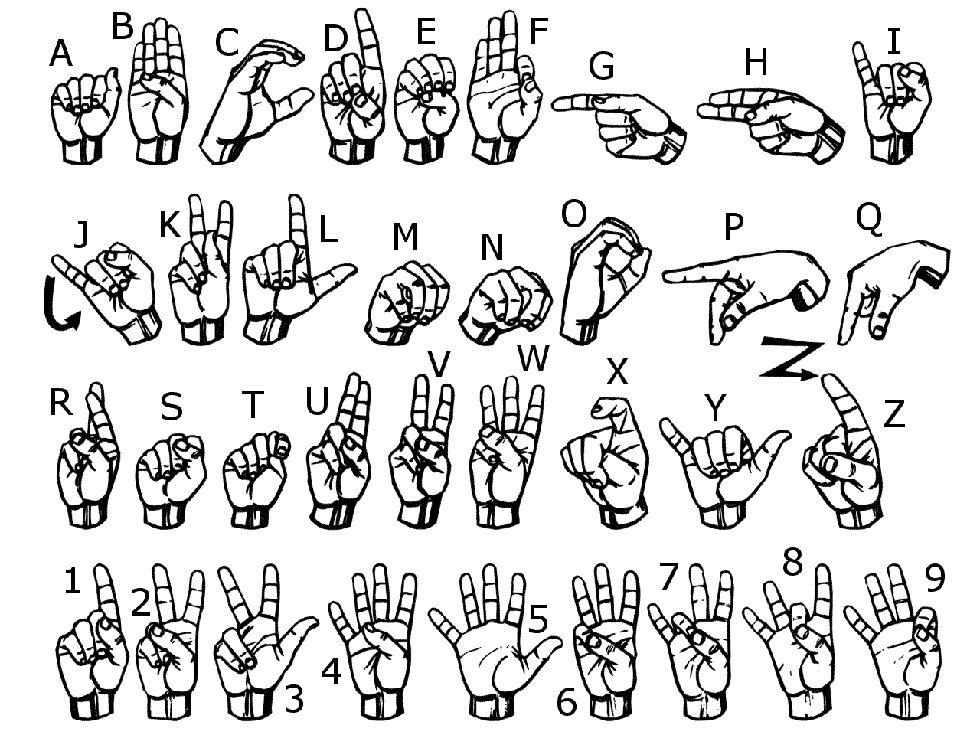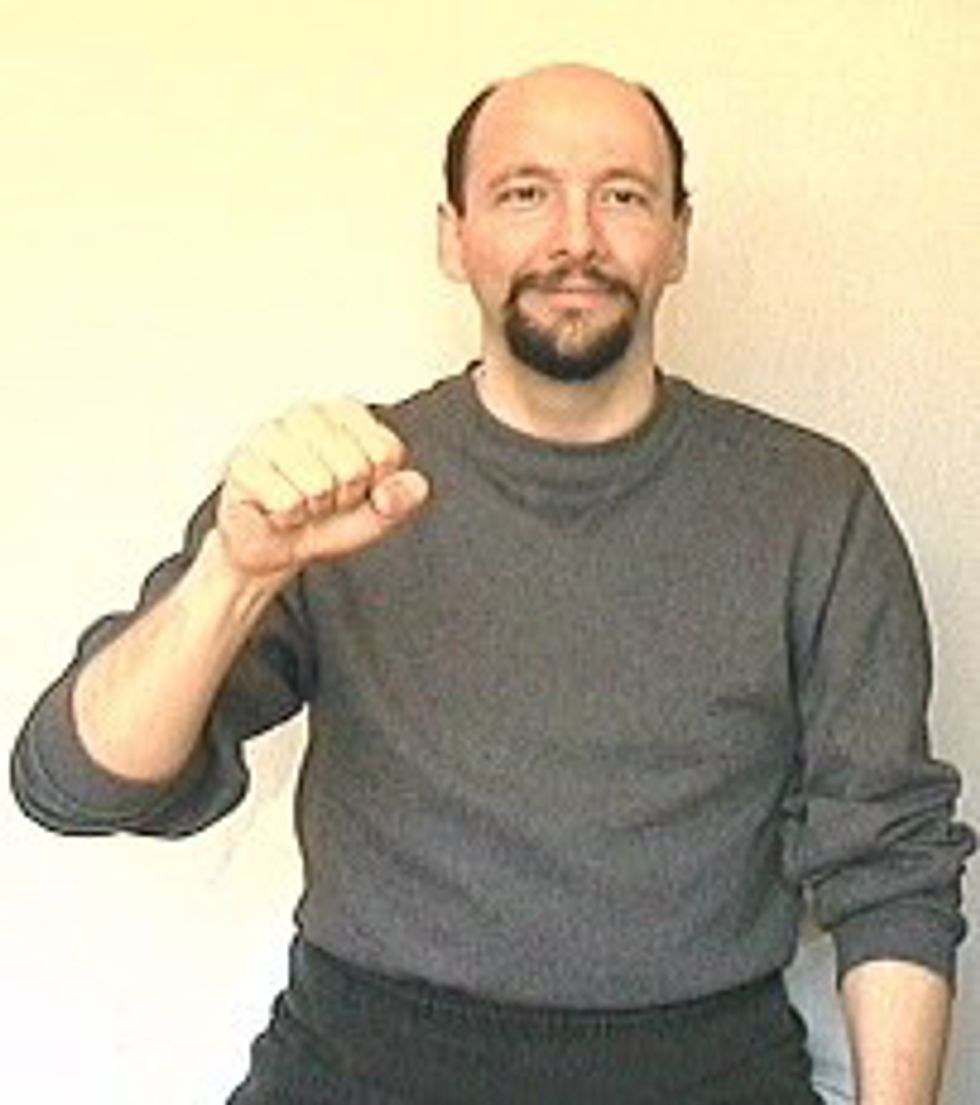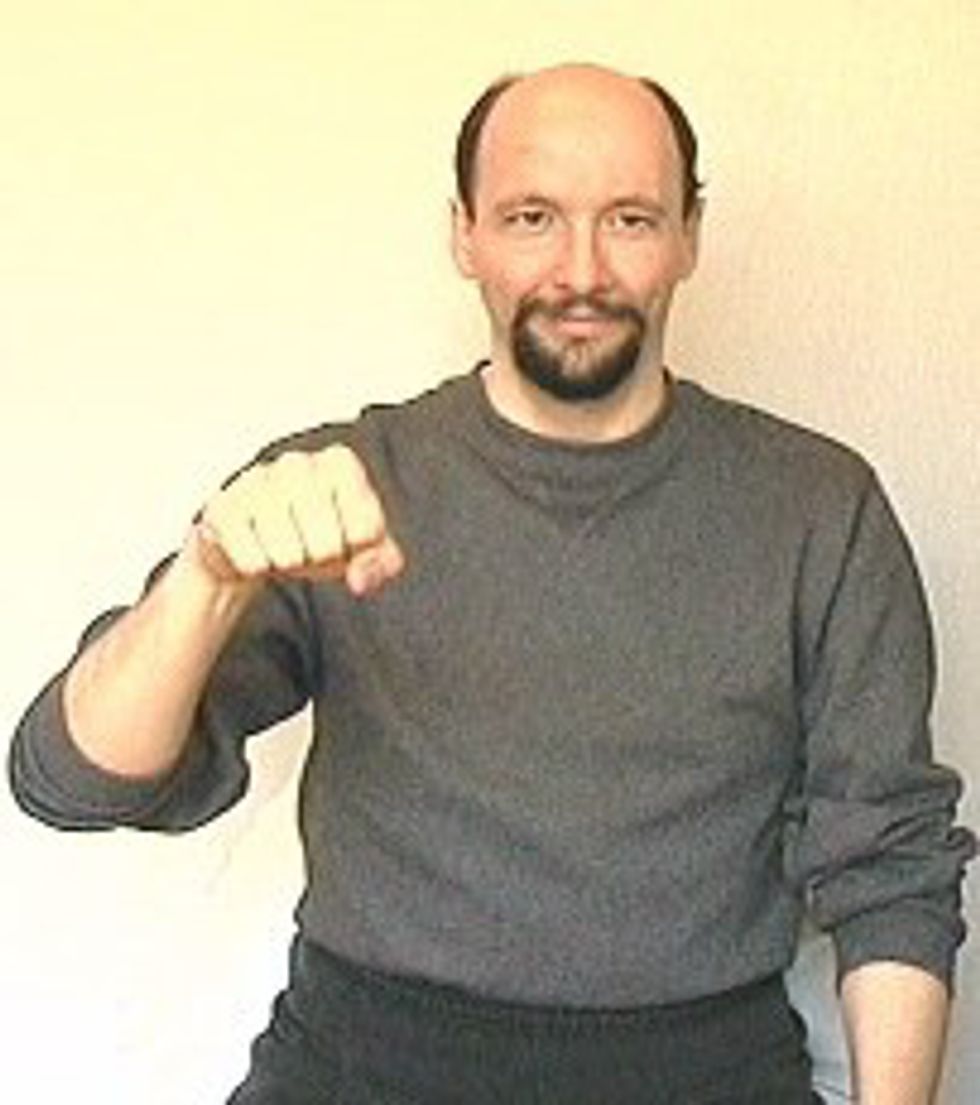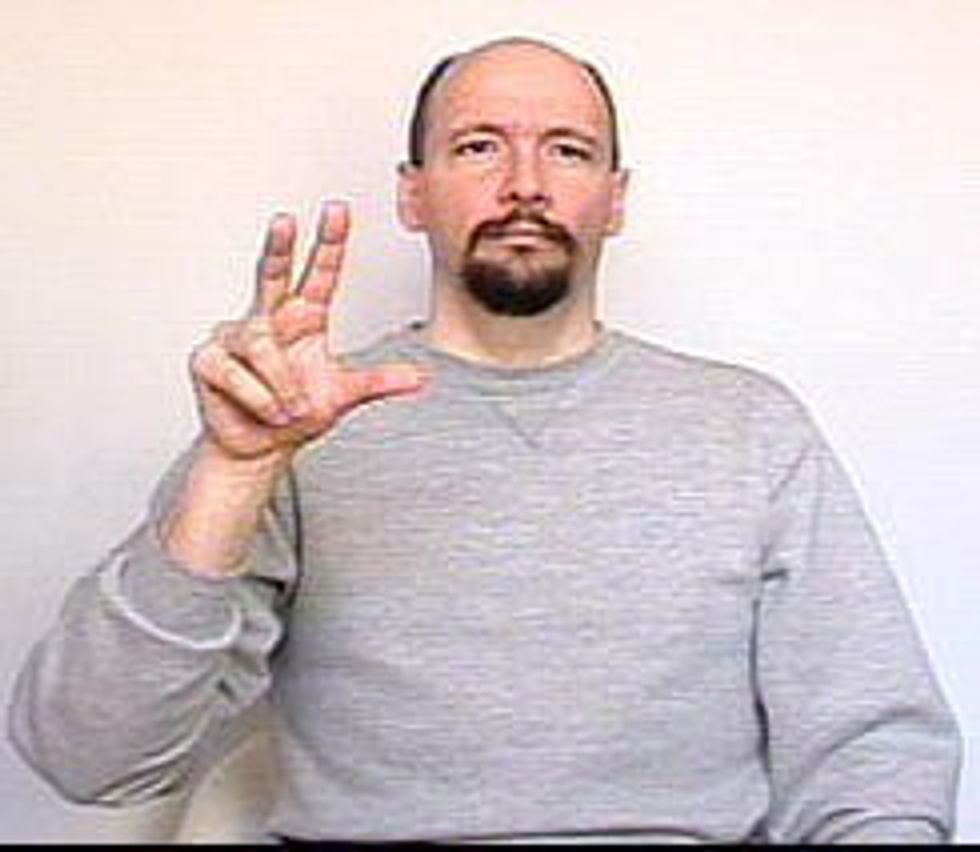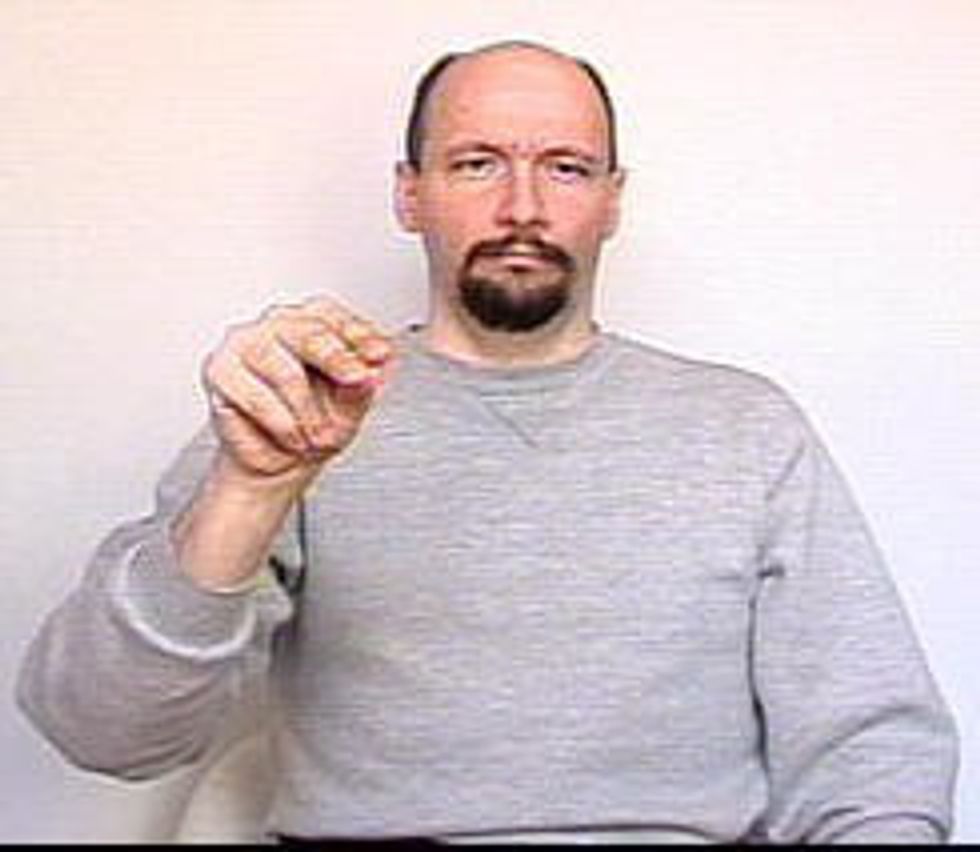American Sign Language, or ASL, is an extremely interesting language that everyone should try and learn. Signs are conceptual, making them easier to understand, and, by learning ASL, you can open yourself up to communication with Deaf people. We live in a hearing dominated world so we don't often think about ASL or the Deaf community in general, but they have a lot to say with just their hands. If you have the opportunity to learn, take a class in ASL or just learn some on your own, that's great, but if you just want to get started with some basics, here are 10 signs to get you going:
1. The Alphabet/Numbers
The most important thing you have to learn before any sign is fingerspelling. Learning the alphabet is pretty easy and once you know it, you can spell any word. If you're ever unsure of a sign, all you have to do is fingerspell the word, and if the person you're talking to knows the sign, boom! New sign for you! The numbers are also really helpful, so start out with 1-10.
2. Name
Once you have the alphabet down, you can learn to sign your name. The sign for name, as shown above, is chopping down your dominant index and middle finger on your non-dominant. Combined with fingerspelling, you can now sign "My name is___" This is done by angling your palm towards your chest, signing "name" and then fingerspelling your name.
3. What
Now that you can sign an introduction, how about asking a new friend their name? This is pretty similar to number two, but instead, you angle your palm toward them, sign "name" and then sign "what" which just looks like what you'd think. In ASL questions, you sign the "Wh" (what, why, where, when, how) signs at the end of a sentence. Also, all "Wh" questions involve lowering your eyebrows, while yes/no questions involve raising your eyebrows. Eyebrows and facial expressions, in general, are very key to ASL, don't forget them!
4. and 5. Yes/No
How to answer a lot of questions: yes or no. "Yes" is just knocking your fist and "no" is opening up three fingers and closing them as shown in the picture. "Yes" and "no" are always helpful to learning a new language.
6. Please and 7. Thank you
You never want to learn a new language and be rude, so here are your basic etiquette signs. If you're asking for something, circle an open palm on your chest for "please," and if you want to thank someone, touch your chin and move that hand off. BONUS! The sign for "good" is the same as "thank you," but you just bring your dominant palm backwards into your non-dominant palm.
8. Bad
Since you know "good," you might as well learn "bad." This is very similar to "good" in terms of how you start it. Touch your chin, but when you move your hand off turn it upside down and close it into your non-dominant palm. Don't forget facial expressions! They're super important to signing in terms of getting your tone and grammar.
9. Nice
Part one of another sentence to try out: "Nice to meet you." The sign for "nice" is to wipe your dominant hand along the open palm of your non-dominant. This works not just in the sentence, but anytime you plan on using the word "nice."
10. Meet
The basic way to sign "meet" is to make two "ones" with your hands and make them touch, just like two people meeting each other. NOTE! Don't make two "D's," that's "date," and don't put up two fingers unless you want to use a profanity. So to sign "nice to meet you," sign "nice, meet," and then point at the person you're signing to.
This may only be ten signs, but if you noticed, you can already introduce yourself to someone and greet them! Pretty solid start for a beginner. There are so many signs to learn, and if you have the opportunity, so much culture to learn as well. Take these signs as your base and start learning this awesome language!
If you have any troubles with just the pictures or want to learn more you can always google the sign and then ASL, the internet will take it from there. Spread the sign (https://www.spreadthesign.com/) is also a really helpful website if you need more. Happy signing, everyone!


